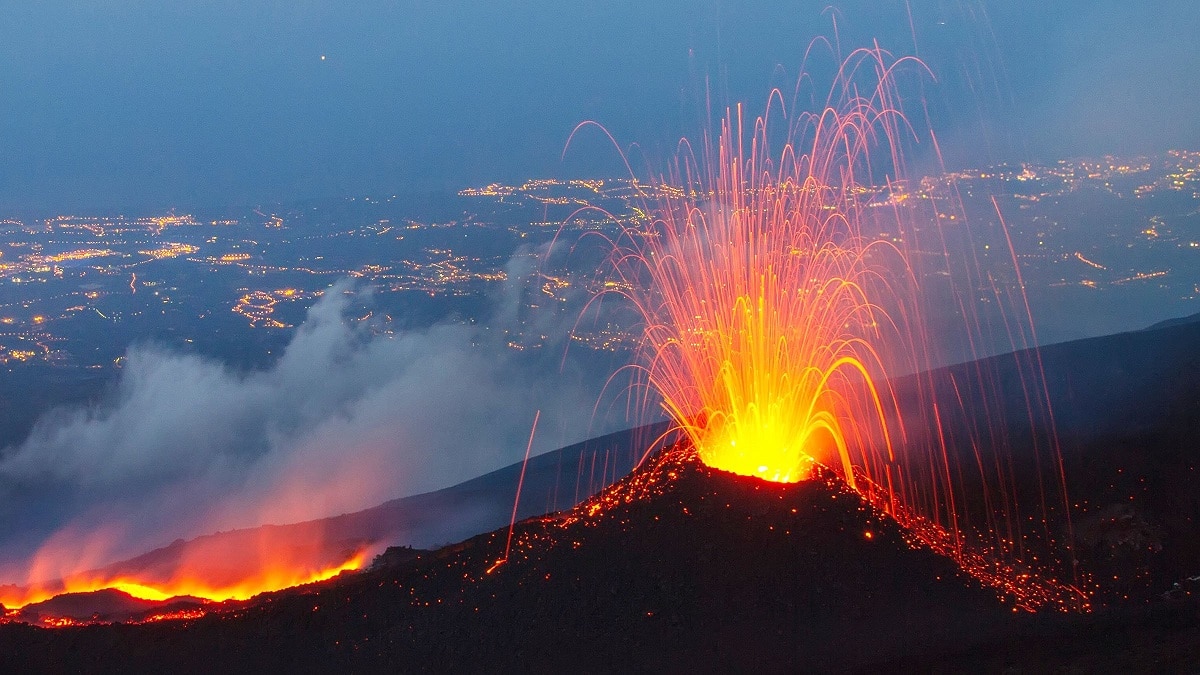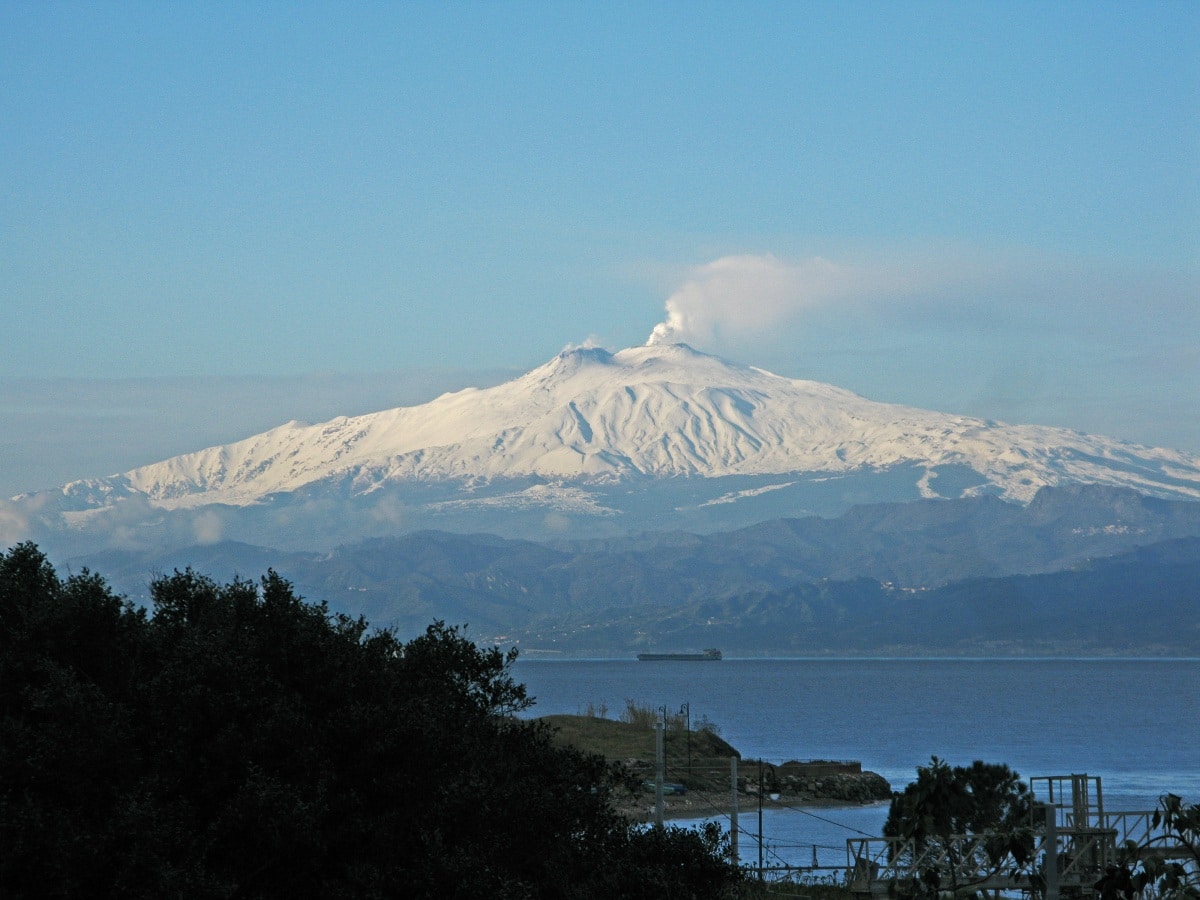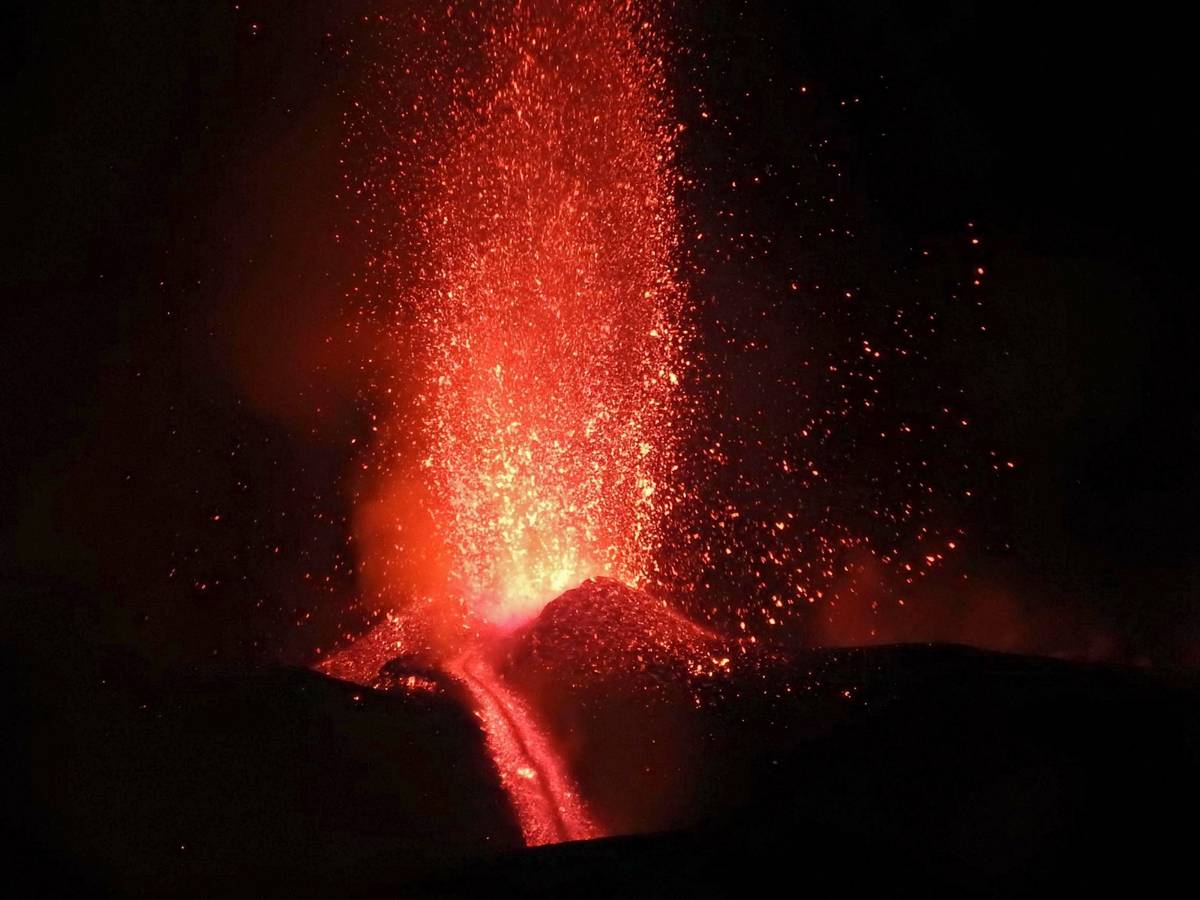
Among the most active volcanoes in all of Europe is the Etna volcano. It is also known as Mount Etna and is a volcano located on the east coast of Sicily in the southern part of Italy. It is considered the largest active volcano in all of Europe since it erupts every few years. It is a volcano that attracts a lot of tourism and is the main source of income for the island.
In this article we are going to tell you about the characteristics, eruptions and curiosities of the Etna volcano.
Key features

This volcano towers over the city of Catania on the island of Sicily. It has been growing for about 500.000 years and has had a series of eruptions that began in 2001. It has experienced several eruptions, including violent explosions and massive lava flows. More than 25% of the population of Sicily lives on the slopes of Mount Etna, which is the island's main source of income, including agriculture (due to its rich volcanic soil) and tourism.
At an altitude of more than 3.300 meters, it is the highest and widest aerial volcano on the European continent, the highest mountain in the Mediterranean basin and the highest mountain in Italy south of the Alps. It overlooks the Ionian Sea to the east, the Simito River to the west and south, and the Alcantara River to the north.
The volcano covers an area of about 1.600 square kilometers, has a diameter of about 35 kilometers from north to south, a circumference of about 200 kilometers and a volume of about 500 square kilometers.
From sea level to the top of the mountain, the scenery and habitat changes are astonishing, along with its rich natural wonders. All this makes this place unique for hikers, photographers, naturalists, volcanologists, spiritual freedom, and nature lovers of earth and paradise. Eastern Sicily displays a wide variety of landscapesBut from a geological point of view, it also offers incredible diversity.
Etna volcano geology

Its geological characteristics indicate that the Etna Volcano has been active since the end of the Neogene (that is, the last 2,6 million years). This volcano has more than one activity center. Several secondary cones are formed in the transverse cracks that extend from the center to the sides. The current structure of the mountain is the result of the activities of at least two major eruption centers.
At a distance of only about 200 kilometers, passing through the provinces of Messina, Catania and Syracuse, there are two different tectonic plates with very different rock types, from metamorphic rocks to igneous rocks and sediments, a subduction zone, many regional faults. Mount Etna, active volcanoes in the Aeolian Islands and outcrops of ancient volcanic activity on the plateau of the Ibleos Mountains.
There is a thick sedimentary basement under Mount Etna, which can reach an altitude of 1.000 meters, making the thickness of the volcanic rock accumulated in 500.000 years is about 2.000 meters.
The north and west sides of the sedimentary rocks at the bottom of the volcano are Miocene clay-turbidite sequences (formed by sediments carried by ocean currents), while the south and east sides are rich marine sediments from the Pleistocene.
On the contrary, due to the hydrogeology of this volcano, the area is richer in water than the rest of Sicily. In fact, lava is highly permeable, acts like an aquifer, and sits on a non-porous, impermeable sedimentary base. We can imagine Mount Etna as a huge sponge that can absorb winter rain and spring snow. All of this water travels through the body of the volcano and eventually comes out in springs, especially near the contact between the impermeable and permeable rocks.
Eruptions and tectonic plates of the Etna volcano

Between 2002 and 2003, the largest series of volcanic eruptions in many years released huge plumes of ash, that can be easily seen from space, to Libya, on the other side of the Mediterranean Sea.
Seismic activity during the eruption caused the east side of the volcano to slide down two meters, and many houses on the flank of the volcano suffered structural damage. The eruption also completely destroyed Rifugio Sapienza on the south side of the volcano.
There are many theories as to why the Etna volcano is so active. Like other Mediterranean volcanoes like Stromboli and Vesuvius, is at the subduction limit, and the African tectonic plate it is pushed under the Eurasian plate. Although they seem geographically close, the Etna volcano is actually very different from other volcanoes. It is actually part of a different volcanic arc. The Etna, instead of sitting directly in the subduction zone, actually sits right in front of it.
Located on the active fault between the African plate and the Ionian microplate, they slide together underneath the Eurasian plate. Current evidence suggests that the much lighter ionic plates may have broken, some of which were pushed back by the much heavier African plates. Magma directly from the Earth's mantle is absorbed by the space formed by the inclined ionic plate.
This phenomenon can explain the type of lava produced by the eruption of Mount Etna, similar to the type of lava produced along deep sea crevices, where the magma of the mantle is forced to pass through the crust. Lava from other volcanoes is of the type produced by the melting of the existing crust rather than the eruption of the mantle layer.
Curiosities
Some of the most striking curiosities of this volcano are the following:
- Appeared in a Star Wars movie
- There were several attempts to control the lava flows that threatened to destroy the city of Catania.
- It is a stratovolcano. This type of volcano is considered one of the most dangerous due to its eruptions that are highly explosive.
- Etna's name means "I burn."
- Some of the lava from the volcano is 300.000 years old.
I hope that with this information you can learn more about the Etna volcano and its characteristics.